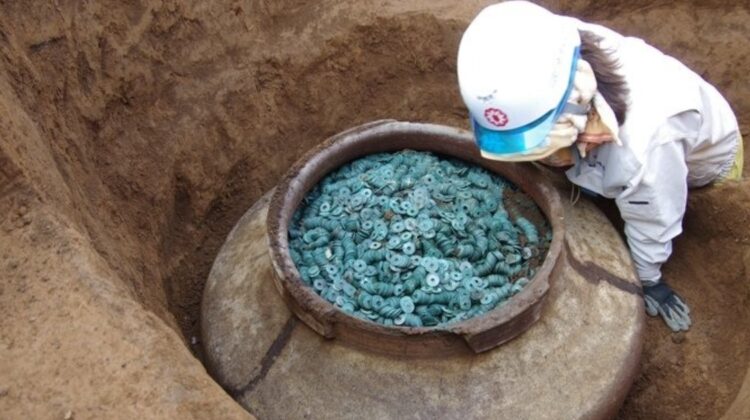
In a stunning discovery, archaeologists in the Saitama Prefecture near Tokyo stumbled upon the fortune of a Japanese samurai in August 2018. The treasure trove of medieval coins, found in a large two-foot-wide ceramic jar dating back to the fifteenth century, has been hailed as the largest haul of its kind ever unearthed in Japan.
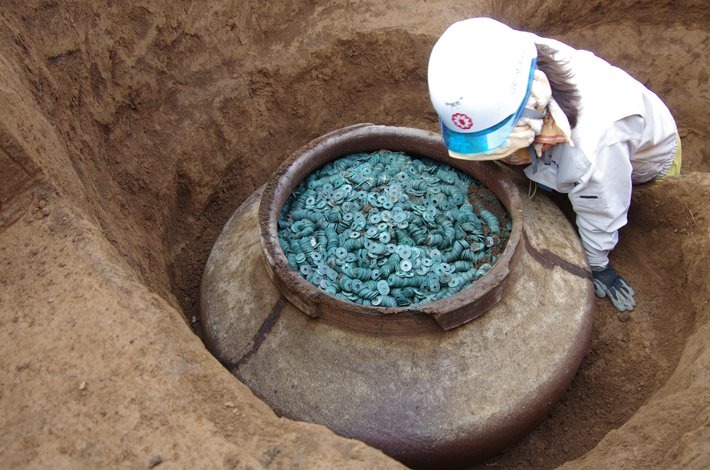
The remarkable jar contained an astonishing collection of bronze coins, their copper surfaces now adorned with a vibrant green hue due to the natural oxidation process known as verdigris. The archaeologists believe that over one hundred thousand coins were nestled within the jar, along with a wooden tablet that offers a tantalizing clue. The tablet features the Japanese words “nihyaku rokuju,” indicating the number 260, possibly referring to 260 kan, units of one thousand, and suggesting that there might be a staggering 260,000 coins within.
The coins themselves are unique, with an opening in the center allowing them to be strung on ropes. Among the hoard were a few distinct coins from China’s Ming and Tang dynasties, showcasing the ancient links between these neighboring civilizations.
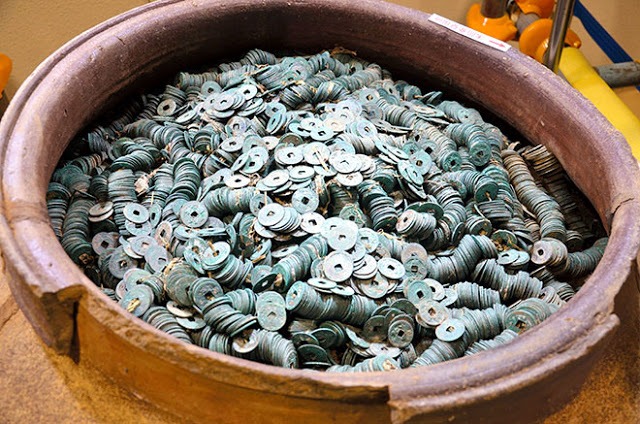
The coins’ discovery offers a fascinating glimpse into Japan’s tumultuous past during the Muromachi Period (1333-1573 AD) under the Ashikaga Shogunate. The era was marked by power struggles, including a war between Ashikaga Takauji and his brother Tadayoshi, which ultimately led to Ashikaga Takauji emerging victorious. During this time, the rules governing samurai behavior were solidified, emphasizing traits like bravery, honor, and personal loyalty.
The samurai, an esteemed class of soldiers, pledged their loyalty to the daimyo, land-holding military governors, and lived by a strict code of honor. They were easily distinguishable by the two swords they carried and received significant remuneration and privileges for their service.
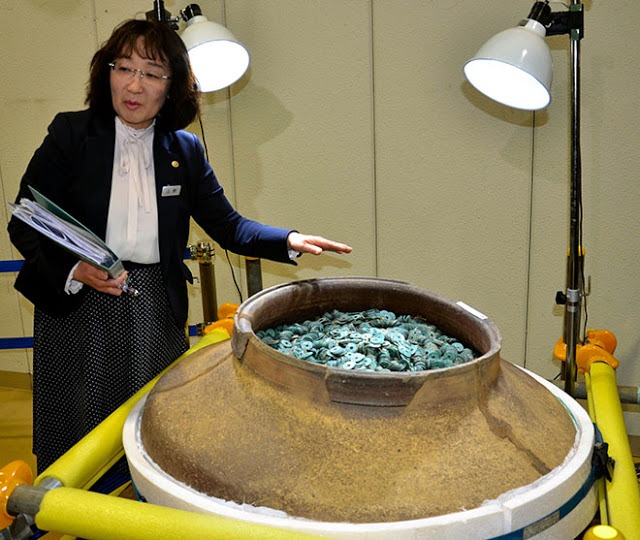
The Warring States period (1467-1568 AD) saw Japan embroiled in internal conflicts as rival daimyo warlords and samurai vied for power and control. Civil unrest, feuds, and power struggles plagued the nation, with the coveted title of Shogun becoming a contested prize. The ordinary civilians bore the brunt of this strife, enduring lawlessness, brutality, and hardships.
Despite the turbulence, this period also witnessed the emergence of cultural and artistic achievements. Warlords built magnificent castles to protect themselves, and the Japanese tea ceremony, popularized by Buddhist monks, gained prominence. The Zen religion nurtured talented artists, including the renowned Zen priest Sesshu/Toyo.
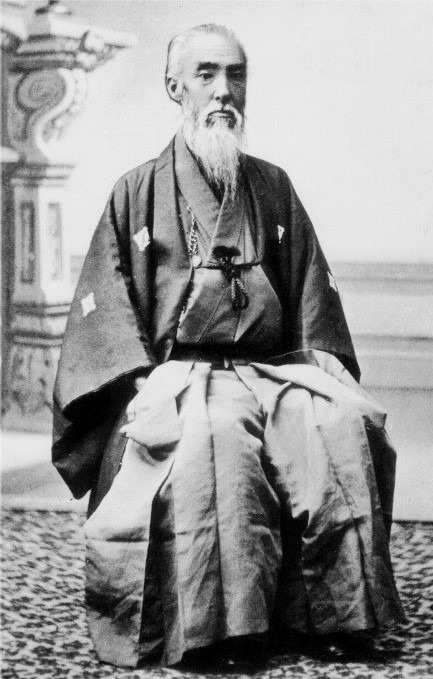
The discovery of these ancient coins offers a rare glimpse into a turbulent time in Japan’s history when power struggles and upheaval reigned. The coins are now on display at the Saitama Prefecture’s cultural treasury in Kumagaya, allowing visitors to marvel at the tangible remnants of a bygone era and appreciate the enduring legacy of Japan’s rich cultural heritage.

Leave a Reply